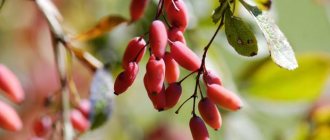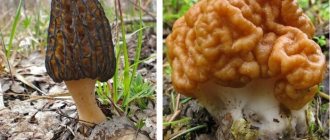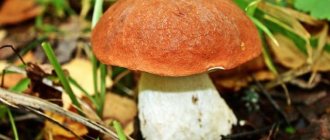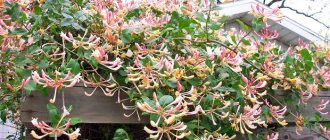Chamomile - the little sun of meadows and fields, one of the most joyful and positive flowers. A whole armful or a single twig can bring a smile and a romantic mood. This surprisingly unpretentious plant not only gives people positive emotions, but also brings many benefits to the human body for several centuries.
Beneficial features
A medicinal plant such as Chamomile has a number of therapeutic properties:
- Sedative effect, there is a decrease in anxiety, excitement, stress and depression.
- Normalization of the heart rhythm, due to the cardioprotective effect, it is possible to protect the myocardium from negative external influences.
- Improving general blood circulation, combating congestion.
- Accelerates brain function, thereby enhancing cognitive functions.
- Regulation of the gastrointestinal tract consists of relieving inflammation, reducing gas formation and other unpleasant sensations.
- Antiseptic property, helps protect mucous surfaces and restore damaged tissues, stimulating regeneration.
- Improved sleep and performance.
- Some antiallergic effect.
- Strengthening vascular walls and preventing cardiovascular diseases.
In addition, Chamomile contains natural ingredients with analgesic and antispasmodic effects.
World flower
Chamomiles are found naturally in Europe and Asia, both Americas, and Africa. These plants are decorations of fields and meadows. Just looking at them can bring joy. They resemble the sun.
In Ancient Egypt, chamomile was considered one of the flowers of the sun god Ra.
In Scandinavian myths and legends, this plant was one of the gifts to the human world from the supreme god Odin.
The properties of chamomile were studied by ancient Greek healers. Hippocrates and Dioscorides described how this plant should be treated.
The medicine of Rome, which adopted the teachings of Hippocrates and from which modern medicine was eventually born (albeit with great inhibition in the Middle Ages), also paid great attention to chamomile.
Of course, in those days it was not yet called chamomile. Its Latin name is matrix (uterus), uterine herb, which clearly indicates the treatment primarily of female diseases.
Before the introduction of a derivative from the Latin name, the Slavs called the beautiful white-yellow flower ... “navel”, because the yellow inflorescence looks like a navel. By the way, the navel is located on the stomach, and the stomach is life. So, whatever one may say, chamomile cannot be called a simple flower.
Peoples who had relations with Rome and adopted the principles of classical schools of healing began to call chamomile the “Roman flower”, romana (it has already been transformed into the name familiar today).
Chamomiles are still known today as useful medicinal plants. Let's remember: chamomile tea, decoctions for rinsing and baths, compresses and cosmetic ice based on these decoctions. Chamomile is brewed and drunk according to a special scheme for the treatment of gynecological diseases, douched with chamomile decoction. Here's matrix for you.
There are many types of daisies in the world, we won’t go into botany. Briefly: pharmaceutical chamomile is not as beautiful as specially bred lush garden chamomile. Many flowers look like daisies and can be confused. For example, the three-rib is almost exactly the same as a daisy, as are some varieties of daisies. And if you come across a familiar flower, but with seemingly torn off petals, do not rush to be indignant. This could be the so-called “fragrant chamomile”, it is always like this. But ultimately it doesn't matter. If the plant is beautiful, it has white petals and a yellow center, we’ll just be happy with it.
And how many beautiful and, of course, romantic stories are associated with chamomile!
One day, a beautiful fairy fell in love with an earthly youth, a simple shepherd, after hearing him play the pipe. They began to meet in nature, and the sorceress, out of fullness of feelings, endowed her chosen one with the gift of healing, which he did not fail to use. People began to flock to the once poor shepherd, who treated people first for free, then for money, and constantly raised prices. He became very rich, but his heart hardened. It turned out that he no longer needed the fairy. The abandoned beloved was sad and cried, and beautiful daisies grew from her tears. Since then, people have turned to these flowers to find out whether the one who is “in their heart” loves or dislikes them. And they are treated with them (after all, the essence of the fairy was healing). But the shepherd lost his gift with every tear that fell, until he lost it completely. Serves him right.
Chamomiles are flowers of love, sometimes unrequited
The Slavs have their own legend about daisies.
Once upon a time, there lived lovers - Roman and Lyubov. They were young, happy and believed that they would get married and live happily ever after. But one day Roman, who was falling asleep thinking about his beloved, dreamed of a very beautiful and delicate flower with white petals and a yellow core. Waking up, the young man discovered that this flower had magically appeared in his garden. Of course, he immediately gave it to his Love. She named the plant in honor of her beloved donor. But there was only one flower, it would inevitably wither, and Roman decided to definitely find others to give to his girlfriend and show such beauty to other people. The young man went on a journey, but the maiden remained waiting. He walked all over the earth, but these beautiful flowers were nowhere to be found. And then it turned out that they grew up... in the land of dreams. That is why the lover dreamed of the first daisy, materializing only because his feelings were very strong. The hero went to a magical land to get daisies, but the ruler of the land of dreams did not let Roman, who had invaded his domain, go back. In return for the young man remaining there, daisies still appeared on the ground. When Lyubov saw a whole field of daisies, she realized that her betrothed would never return. But people who met daisies admired them, becoming a little kinder and happier, and discovered tender love in their hearts.
This story is also an excellent basis for folk fortune telling on petals and girlish love fortune-telling with this flower.
Well, how else can you find out: he loves you or not?
Some tribes of Central Africa seriously believed that chamomile could attract spirits, and were so afraid of this that they almost completely destroyed the plant in their territories. But in Australia, where they didn’t know about daisies before colonization, the flower was brought and now it grows there and does not bother.
In the language of flowers, widespread in the 19th century among rich and noble people (when each flower, their combination in composition and design had an official meaning and the bouquet could literally be “read”), chamomile meant youth, freshness, purity, innocent but strong love, tenderness and fidelity. Read romance.
Matters of the heart
In Russia, chamomile has recently been almost officially made the flower of love. Svetlana Medvedeva, at a time when her husband Dmitry Medvedev was the president of the country, was able to popularize the holiday Day of Family, Love and Fidelity (in Orthodoxy, the Day of Remembrance of Peter and Fevronia of Murom, July 8 in the new style). It came to be called "our answer to Valentine's Day." The symbolic flower for this day was chamomile, although it did not appear in the original legend. Today we strongly associate chamomile with family holidays. Bouquets of daisies are given to couples celebrating silver, gold, and diamond weddings, and to newlyweds just entering the world of married life. Images of daisies are sent to each other in messengers, congratulating them on the holiday. Registry offices, banquet halls, and public places are decorated with white and yellow flowers on July 8th.
It couldn't be more romantic!
What does Chamomile treat?
Due to its unique composition and enormous benefits, the plant is widely used in various fields of medicine to treat a number of diseases. Chamomile is used as a decoction, infusion, tea, ointment and other types topically and internally.
The main indications for prescribing medicinal herbs are:
- Gastrointestinal diseases - gastritis, enteritis, colitis, biliary tract dysfunction.
- Increased body temperature.
- Liver pathologies.
- Flatulence, epigastric pain.
- Inflammatory processes of the ENT organs.
- Respiratory tract infections.
- Skin diseases - eczema, rash, burns, ulcers, wounds.
- Intense pain during menstruation.
- Tonsillitis.
- Hyperhidrosis of the lower and upper extremities.
- Pathologies of the oral cavity - stomatitis, gingivitis, sore gums.
- Eye rinsing for ophthalmic conditions.
- Basis for microenemas.
- Relief of symptoms due to injuries, bruises, rheumatism, gout and arthritis.
Notes
- For the convention of indicating the class of dicotyledons as a superior taxon for the group of plants described in this article, see the section “APG Systems” of the article “Dicotyledons”.
- ↑ 1 2
[botany.si.edu/ing/INGsearch.cfm?searchword=Matricaria Information about the genus
Matricaria
Index Nominum Genericorum
database of the International Association for Plant Taxonomy (IAPT). (English) - [www.theplantlist.org/tpl1.1/record/gcc-6463 Matricaria recutita
]: Taxon name information on
The Plant List
(version 1.1, 2013). (English) - ↑ 1 2
[www.theplantlist.org/1.1/browse/A/Compositae/Matricaria/ Species of the genus
Matricaria
The Plant List
database . (English) - ↑ 1234
Botany, 2006. - TSB.
- See the GRIN link in the plant card.
- [www.ars-grin.gov/cgi-bin/npgs/html/gnlist.pl?2920 Complete list of genera of the subtribe Matricariinae
] //
Germplasm Resources Information Network
(
GRIN
) - April 10, 2011. (English) (Retrieved November 27 2012) - [www.ars-grin.gov/cgi-bin/npgs/html/family.pl?2778 Subfamily Asteroideae
] //
Germplasm Resources Information Network
(
GRIN
) - January 6, 2011. (English) (Accessed November 27, 2012)
Contraindications
Despite the natural composition of Chamomile, it is not recommended for use in the following cases:
- Severe pathologies of the kidneys and organs, especially chronic ones.
- Diarrhea of unknown origin.
- Hypersensitivity to the components included in the base or allergy to the plant itself.
- Mental illnesses.
- Ulcerative lesions of the digestive tract during an exacerbation.
Classification
Taxonomic position
The genus Chamomile along with the genus Anacyclis ( Anacyclus
), Otanthus
,
Yarrow (
Achillea
) and
Heliocauta
form the subtribe Chamomile (
Matricariinae
) within the tribe Anthemideae
of
Asteroideae
subfamily
the Asteraceae
family .
| subfamily Chicoryaceae, etc. | 13 more subtribes[9] | ||||||||||||||||||
| about twenty species | |||||||||||||||||||
| family Asteraceae , or Asteraceae | tribe Umbilicals , or Antemideae | genus Chamomile | |||||||||||||||||
| order Astrocolored | subfamily Asteraceae | subtribe Chamomile | |||||||||||||||||
| 12 more families (according to the APG III System), including Campanulaceae, Stylidiaceae | about twenty more tribes, including the Aster and Cross tribes | four more genera, including Yarrow | |||||||||||||||||
Kinds
According to modern concepts, the genus includes 25 species[4] (some common synonyms are also given):
- Matricaria aserbaidshanica Rauschert - Azerbaijani chamomile
- Matricaria aurea (Loefl.) Sch.Bip. — Golden chamomile [syn. Chamomilla aurea (Loefl.) Gay ex Coss. & Kralik]
- [syn. Cotula aurea Loefl.]
- [syn. Chamomilla recutita () Rauschert - Common chamomile, or Medicinal chamomile, or Chamomilla vulgaris]
- [syn. Tripleurospermum hookeri Sch.Bip. — Hooker's three-rib]
- [syn. Matricaria suaveolens (Pursh) Buchenau]
- [syn. Tripleurospermum subpolare Pobed. — Tricostal circumpolar]
Is it possible to drink pharmaceutical Chamomile during pregnancy?
Chamomile is a natural remedy. Therefore, women are allowed to use it while pregnant, but this should be done with caution and under the supervision of a doctor.
With the correct selection of a therapeutic course, the medicinal plant helps fight emotional swings, helping to suppress stress, irritation and causeless anxiety.
Regular use of Chamomile internally also prevents symptoms of intoxication, eliminating nausea and vomiting.
Due to the sedative effect, there is a decrease in headaches, malaise, and normalization of the nervous and cardiovascular systems.
You should take no more than 450 ml of the product per day to avoid negative consequences.
Description of garden perennial chamomile
The brightest large-flowered plants are used to decorate flower beds. Flower growers first became interested in daisies more than two hundred years ago, so many cultivated varieties have appeared over the years. And although perennial garden daisies can be of different heights, have different flowering times and inflorescence shapes, all daisies have much in common. First of all, this is a recognizable form of an inflorescence-basket, the core of which consists of small tubular yellow flowers, and the frame is made of false-ligulate petals.
Today, thanks to the efforts of breeders, semi- and double varieties of garden chamomile are available to gardeners.
Compared to wild specimens in cultivated perennials:
- flowers are larger;
- bud formation is much more active;
- the flowering period is longer;
- flowers may reappear in the second half of summer.
The garden chamomile depicted in the photo, Leucanthemum vulgare or Leucanthemum maximum, is most often popularly called cornflower or popovka. In early spring, a rosette of oblong basal leaves appears above the soil. When inflorescences appear on faceted, erect stems, the height of the plant can vary from 20 to 80 cm. Depending on the variety, the diameter of the inflorescences can reach from 3 to 10 cm.
Chemical composition
The beneficial and medicinal properties are determined by the components in the chemical composition of chamomile. In the aerial part of the plant, the flavone glycoside umbelliverone, dioxycoumarin, phytosterol, salicylic acid, glycosides of linoleic, palmitic, oleic, stearic acids, fat, sugar, bitterness, tannins, wax, gum were found. There are also vitamins: C (ascorbic acid), B3 (nicotinic acid), B4 (choline).
Essential oil (0.3-0.9%) was found in chamomile (inflorescences) containing chamazulene, terpenes, sesquiterpenes, lactones, coumarins, organic acids, flavonoids, bitterness, mucus, polysaccharides, carotene, vitamins, glycosides, etc. .
In addition, the following macro and microelements were found in the flowers: potassium (41.8 mg/g), calcium (8.3 mg/g), magnesium (3.1 mg/g), iron (0.3 mg/g), as well as boron (38.8 µg/g), zinc (0.8 µg/g), copper (0.78 µg/g), selenium (7.2 µg/g), manganese (0.29 µg/g ), aluminum (0.27 µg/g), nickel (0.24 µg/g), barium (0.2 µg/g), etc.
Important! The information presented in the material is for informational purposes only. Before use, be sure to consult a specialist.
Features of growing leucanthemum nivaria from seeds
Leucanthemum leucanthemum reproduces well by seeds. It is recommended to grow decorative perennials yourself using seedlings, adhering to the following simple rules:
- use of well-fertilized and clean soil substrate for growing seedlings;
- using well-washed and disinfected seedling containers of sufficient volume;
- filling the bottom of the planting container with high-quality drainage;
- sowing seed material at a depth of one and a half centimeters;
- high-quality moistening of completed crops with well-settled soft water at room temperature;
- maintaining the air temperature in the growing room at 22-23°C.
After mass shoots appear, it is recommended to lower the air temperature by about a couple of degrees. After about a month and a half, the flower seedlings can be carefully picked into separate planting containers. Planting flower seedlings in a permanent place in open ground should be done after the threat of spring return frosts has completely passed.
Traditional treatment recipes
Various herbal decoctions, infusions and teas are widely used to treat diseases. For example, chamomile is used in the treatment of the following diseases:
For migraines: take 20 inflorescences and pour 1 glass of boiling water. Drink 1/3 cup 3 times a day, an hour after meals
For colds: pour 1 tablespoon of dried chamomile flowers into 250 ml. hot water, leave until cool, filter. Drink 1/3 glass, 4 times a day
For gastritis: 1 tbsp. Pour a spoonful of chamomile into 1 cup of boiling water. Leave for at least 1 hour. Use as tea
For low acidity: take 0.5 - 1 glass before meals 1-3 times a day
For high acidity: 1 glass 3 times a day, before meals
For hemorrhoids: pour 3 tablespoons of the mixture into 200 ml. boiling water, close tightly, leave for an hour, strain. Rinse hemorrhoidal cones with infusion
For stomatitis: 20 g. pour 200 ml of chamomile flowers. water, insist. Add 4 grams to the resulting infusion. boric acid. Use as a mouth rinse
For laryngitis: pour 1 teaspoon of dry collection into 200 ml. boiling water, leave in a thermos for 30-40 minutes, cool. Infusion to gargle
For flatulence: pour 3 tablespoons of chamomile into 0.5 liters. boiling water, leave in a thermos for 3 hours. Take 1 glass 2 times a day. 1.5 hours before meals. Course of treatment - 20 days
For diverculitis: pour 2 teaspoons of the medicinal mixture into 250 ml. boiling water Leave for a quarter of an hour. Consume internally as tea
For conjunctivitis: 3 tablespoons of chamomile medicinal collection, pour 250 ml. hot water, leave for an hour, strain. Use as an eye wash
For chronic gastritis: pour 2 tablespoons of the mixture into 0.5 liters. boiling water, cool for 2 hours, filter. Dissolve 1 tablespoon of gum in the infusion. Take 2 tablespoons 3 times a day, 30 minutes before meals. Treatment course 14 days
For stomach cramps and diarrhea: pour 2 tablespoons of dry collection into 200 ml. water, heat in a water bath for 30 minutes, then leave for 15 minutes, strain. Drink 0.5 cups. twice a day
For stomach and duodenal ulcers: pour 1 tablespoon of dry inflorescences into 200 ml. boiling water, then leave in a thermos for 1 hour, strain. Drink a glass at a time and immediately go to bed, turn over from one side to the other every 10 minutes. This is necessary so that the infusion evenly moistens all the walls of the stomach. Course of treatment - 4 times a month
Botanical description
Chamomile is a herbaceous annual. Height: 15-60, up to 90 cm.
Root
Chamomile root is taproot, thin, branched, underdeveloped. Color: light brown.
Stem
The stem of chamomile is vertical, thin, and highly branched.
Leaves
The leaves of chamomile are alternate, sessile, doubly and thrice peripartite, strongly dissected into thin, narrow filament-like segments. Color: bright green. Length: 2-5 cm.
Flowers
Chamomile flowers are bisexual. The marginal ones are pistillate, ligulate, white, the inner ones are golden yellow, funnel-tubular. Collected in small baskets, located on long peduncles at the tops of the stem and shoots. Basket diameter: 1.5-2 cm, with 12-18 reed flowers
Fetus
The fruit is an oblong, slightly curved achene narrowed at the base with 3 ribs. Color: brownish-green. Weight of 1000 chamomile seeds: 0.026-0.08 g.
Flowering-reproduction
Chamomile flowering time: from May to September. The fruits ripen from June. Propagated by seeds.
Chamomile herb has a strong aromatic odor.
Excerpt characterizing Chamomile
The Count was glad that Anna Mikhailovna took part of his instructions, and ordered her to pawn a small carriage. – You tell Bezukhov to come. I'll write it down. How is he and his wife? - he asked. Anna Mikhailovna opened her eyes, and deep sorrow was expressed on her face... “Ah, my friend, he is very unhappy,” she said. “If what we heard is true, it’s terrible.” And did we think when we rejoiced so much at his happiness! And such a lofty, heavenly soul, this young Bezukhov! Yes, I feel sorry for him from the bottom of my heart and will try to give him the consolation that will depend on me. - What is it? - asked both Rostov, the elder and the younger. Anna Mikhailovna took a deep breath: “Dolokhov, Marya Ivanovna’s son,” she said in a mysterious whisper, “they say he has completely compromised her.” He took him out, invited him to his house in St. Petersburg, and so... She came here, and this head-off man is behind her,” said Anna Mikhailovna, wanting to express her sympathy for Pierre, but in involuntary intonations and a half-smile, showing sympathy for the head-off man, like she named Dolokhov. “They say that Pierre himself is completely overwhelmed by his grief.” “Well, just tell him to come to the club and everything will go away.” The feast will be a mountain. The next day, March 3, at 2 o'clock in the afternoon, 250 members of the English Club and 50 guests were expecting their dear guest and hero of the Austrian campaign, Prince Bagration, for dinner. At first, upon receiving news of the Battle of Austerlitz, Moscow was perplexed. At that time, the Russians were so accustomed to victories that, having received the news of defeat, some simply did not believe it, while others sought explanations for such a strange event in some unusual reasons. In the English Club, where everything that was noble, with correct information and weight gathered, in December, when news began to arrive, nothing was said about the war and about the last battle, as if everyone had agreed to remain silent about it. People who gave direction to the conversations, such as: Count Rostopchin, Prince Yuri Vladimirovich Dolgoruky, Valuev, gr. Markov, book. Vyazemsky, did not show up at the club, but gathered at home, in their intimate circles, and Muscovites, speaking from other people’s voices (to which Ilya Andreich Rostov belonged), were left for a short time without a definite judgment about the cause of war and without leaders. Muscovites felt that something was wrong and that it was difficult to discuss this bad news, and therefore it was better to remain silent. But after a while, as the jury left the deliberation room, the aces who gave their opinions in the club appeared, and everything began to speak clearly and definitely. The reasons were found for the incredible, unheard of and impossible event that the Russians were beaten, and everything became clear, and in all corners of Moscow the same thing was said. These reasons were: the betrayal of the Austrians, the poor food supply of the army, the betrayal of the Pole Pshebyshevsky and the Frenchman Langeron, the inability of Kutuzov, and (they said on the sly) the youth and inexperience of the sovereign, who entrusted himself to bad and insignificant people. But the troops, Russian troops, everyone said, were extraordinary and performed miracles of courage. Soldiers, officers, generals were heroes. But the hero of heroes was Prince Bagration, famous for his Shengraben affair and his retreat from Austerlitz, where he alone led his column undisturbed and spent the whole day repelling an enemy twice as strong. The fact that Bagration was chosen as a hero in Moscow was also facilitated by the fact that he had no connections in Moscow and was a stranger. In his person due honor was given to a fighting, simple, without connections and intrigues, Russian soldier, still associated with the memories of the Italian campaign with the name of Suvorov. In addition, in bestowing such honors on him, the displeasure and disapproval of Kutuzov was best shown. “If Bagration did not exist, il faudrait l'inventer, [it would be necessary to invent him.],” said the joker Shinshin, parodying the words of Voltaire. No one spoke about Kutuzov, and some scolded him in a whisper, calling him a court turntable and an old satyr. Throughout Moscow, the words of Prince Dolgorukov were repeated: “sculpt, sculpt and stick around,” who consoled himself in our defeat with the memory of previous victories, and Rostopchin’s words were repeated about the fact that the French soldiers must be excited to fight with pompous phrases, that the Germans must be reasoned logically, convincing them that it is more dangerous to run than to go forward; but that Russian soldiers just need to be held back and asked: be quiet! From all sides new and new stories were heard about individual examples of courage shown by our soldiers and officers at Austerlitz. He saved the banner, he killed 5 French, he alone loaded 5 cannons. They also said about Berg, who did not know him, that he, wounded in his right hand, took the sword in his left and went forward. They didn’t say anything about Bolkonsky, and only those who knew him closely regretted that he died early, leaving behind a pregnant wife and an eccentric father. On March 3, in all the rooms of the English Club there was a groan of talking voices and, like bees on spring migration, scurried back and forth, sat, stood, converged and dispersed, in uniforms, tailcoats and some others in powder and caftans, members and guests of the club . Powdered, stockinged and booted footmen in livery stood at every door and strained to catch every movement of the guests and members of the club in order to offer their services. Most of those present were old, respectable people with wide, self-confident faces, thick fingers, firm movements and voices. This kind of guests and members sat in well-known, familiar places and met in well-known, familiar circles. A small part of those present consisted of random guests - mainly young people, among whom were Denisov, Rostov and Dolokhov, who was again a Semyonov officer. On the faces of the youth, especially the military, there was an expression of that feeling of contemptuous respect for the elderly, which seems to say to the old generation: we are ready to respect and honor you, but remember that after all, the future belongs to us. Nesvitsky was there, like an old member of the club. Pierre, who, at the orders of his wife, had let his hair grow, had taken off his glasses and was dressed fashionably, but with a sad and despondent look, walked through the halls. He, as everywhere else, was surrounded by an atmosphere of people who worshiped his wealth, and he treated them with the habit of kingship and absent-minded contempt. According to his years, he should have been with the young; according to his wealth and connections, he was a member of the circles of old, respectable guests, and therefore he moved from one circle to another. The most important old men formed the center of the circles, to which even strangers respectfully approached to listen to famous people. Large circles were formed around Count Rostopchin, Valuev and Naryshkin. Rostopchin talked about how the Russians were crushed by the fleeing Austrians and had to make their way through the fugitives with a bayonet. Valuev confidentially said that Uvarov was sent from St. Petersburg in order to find out the opinion of Muscovites about Austerlitz. In the third circle, Naryshkin spoke about a meeting of the Austrian military council, in which Suvorov crowed the rooster in response to the stupidity of the Austrian generals. Shinshin, who was standing right there, wanted to joke, saying that Kutuzov, apparently, could not learn this simple art of cock-crow from Suvorov; but the old men looked sternly at the joker, letting him feel that here and today it was so indecent to talk about Kutuzov. Count Ilya Andreich Rostov, anxiously, hurriedly walked in his soft boots from the dining room to the living room, hastily and in exactly the same way greeting important and unimportant persons whom he knew all, and occasionally looking for his slender young son with his eyes, joyfully resting his gaze on him and winked at him. Young Rostov stood at the window with Dolokhov, whom he had recently met and whose acquaintance he valued. The old count approached them and shook Dolokhov's hand. - You are welcome to me, you know my fellow... together there, together they were heroes... A! Vasily Ignatich... is very old,” he turned to a passing old man, but before he could finish his greeting, everything began to stir, and a footman who came running, with a frightened face, reported: “You’re here!” The bells rang out; the sergeants rushed forward; The guests scattered in different rooms, like shaken rye on a shovel, crowded into one heap and stopped in the large living room at the door of the hall. Bagration appeared at the front door, without his hat and sword, which, according to club custom, he left with the doorman. He was not in a smushkov cap with a whip over his shoulder, as Rostov saw him on the night before the Battle of Austerlitz, but in a new narrow uniform with Russian and foreign orders and with the Star of St. George on the left side of his chest. Apparently, before lunch, he had cut his hair and sideburns, which changed his face unfavorably. There was something naively festive on his face, which, in combination with his firm, courageous features, even gave a somewhat comic expression to his face. Bekleshov and Fyodor Petrovich Uvarov, who had arrived with him, stopped at the door, wanting him, as the main guest, to go ahead of them. Bagration was confused, not wanting to take advantage of their politeness; There was a stop at the door, and finally Bagration still walked forward. He walked, not knowing where to put his hands, shyly and awkwardly, along the parquet floor of the reception room: it was more familiar and easier for him to walk under bullets across a plowed field, as he walked in front of the Kursk regiment in Shengraben. The elders met him at the first door, telling him a few words about the joy of seeing such a dear guest, and without waiting for his answer, as if taking possession of him, they surrounded him and led him into the living room. In the doorway of the living room there was no way to pass from the crowded members and guests, crushing each other and trying over each other’s shoulders, like a rare animal, to look at Bagration. Count Ilya Andreich, the most energetic of all, laughing and saying: “Let me go, mon cher, let me go, let me go,” pushed through the crowd, led the guests into the living room and seated them on the middle sofa. The aces, the most honorable members of the club, surrounded the new arrivals. Count Ilya Andreich, again pushing through the crowd, left the living room and a minute later appeared with another foreman, carrying a large silver dish, which he presented to Prince Bagration. On the platter lay poems composed and printed in honor of the hero. Bagration, seeing the dish, looked around in fear, as if looking for help. But in all eyes there was a demand that he submit. Feeling himself in their power, Bagration resolutely, with both hands, took the dish and angrily, reproachfully looked at the count who was presenting it. Someone helpfully took the dish out of Bagration’s hands (otherwise he seemed to intend to keep it like that until the evening and go to the table like that) and drew his attention to the poems. “Well, I’ll read it,” Bagration seemed to say and, fixing his tired eyes on the paper, he began to read with a concentrated and serious look. The writer himself took the poems and began to read. Prince Bagration bowed his head and listened.
Collection and preparation
For medicinal purposes, the inflorescences (flowers) of chamomile are collected, or less often the entire aerial part.
The time for collecting chamomile is the beginning of flowering, when the petals have opened, but have not yet descended. If harvested later, the flowers scatter during drying, which is considered a deterioration in the quality of the raw material. To restore the thickets, be sure to leave at least 20% of well-developed plants.
It should be taken into account that the plant does not dry well, easily heats up, rots, darkens and becomes moldy, which leads to its spoilage. Therefore, the collection of chamomile is carried out in dry weather, and the collected raw materials are dried in the open air in the shade, under a canopy, spread in a layer of 2-3 cm.
Drying can also be carried out indoors, but always with good air ventilation, remembering to turn it over often. The smell of the finished raw chamomile: strong aromatic, taste: spicy, bitter.
Finished dried raw materials are stored in bags or boxes made of natural materials in a dry, well-ventilated area. Shelf life of chamomile: 1-2 years.











